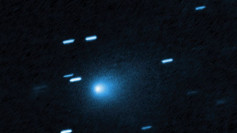Large carbon footprints from powerful ground and space-based telescopes contribute to astronomy's overall greenhouse gas emissions.
According to a new study by the Institute for Astrophysics and Planetology Research (IRAP) in Toulouse, France, the world's cutting-edge astronomical observatories emit around 22 million tons [20 million metric tonnes] of carbon dioxide equivalent over their lifetime.
This figure includes carbon dioxide emissions from the construction and manufacturing phases, as well as greenhouse gas emissions from the observatories' operations. The carbon footprint of delivering space observatories to space, such as the Hubble Space Telescope and recently launched James Webb Space Telescope, was also taken into account by the researchers.
According to the study's researchers, the world's astronomical research facilities emit 1.2 million tonnes of carbon dioxide per year, which is around five times higher than the yearly flying-related carbon footprint of the world's astronomers.
Webb, for example, emits at least 330,000 tons [300,000 metric tonnes] of carbon dioxide over its lifespan, making it the telescope with the highest carbon footprint of all the telescopes and observatories studied, according to the researchers in the paper.
Scientists say the astronomical community will need to reduce the carbon footprint of its research centers by up to a factor of 20 in order to meet global emission reduction targets.
"We have a global reduction target for humanity and this is that the emissions of greenhouse gasses need to decline by about half from 2010 levels by 2030, reaching net zero around 2050," Luigi Tibaldo, a co-author and an IRAP astronomer, said in the news conference.
"This is a necessary condition to keep the increase in the average world temperature within 1.5 degrees Celsius [2.7 degrees Fahrenheit] that has been identified as a target to keep our planet habitable. This will require a strong reduction for all activity sectors, including research and astronomy."
Many astronomical observatories, like the Square Kilometer Array Observatory (SKAO) and the European Southern Observatory (ESO) in Chile, have made recent commitments to reduce their carbon footprint by investing in solar energy generation and focusing on energy usage.
SKAO, for example, seeks to cover at least 45% of its electrical demands with renewable resources but hopes to eventually boost that proportion to 90%, according to representatives from the observatory in an earlier interview with Space.com.
ESO, which operates cutting-edge observatories in Chile's Atacama desert, including the Very Large Telescope, has also launched a major greening initiative, which includes replacing gas turbine power generation with solar power plants at its remote facilities not connected to the electricity grid.
The study was published on Monday in the journal Nature Astronomy.





